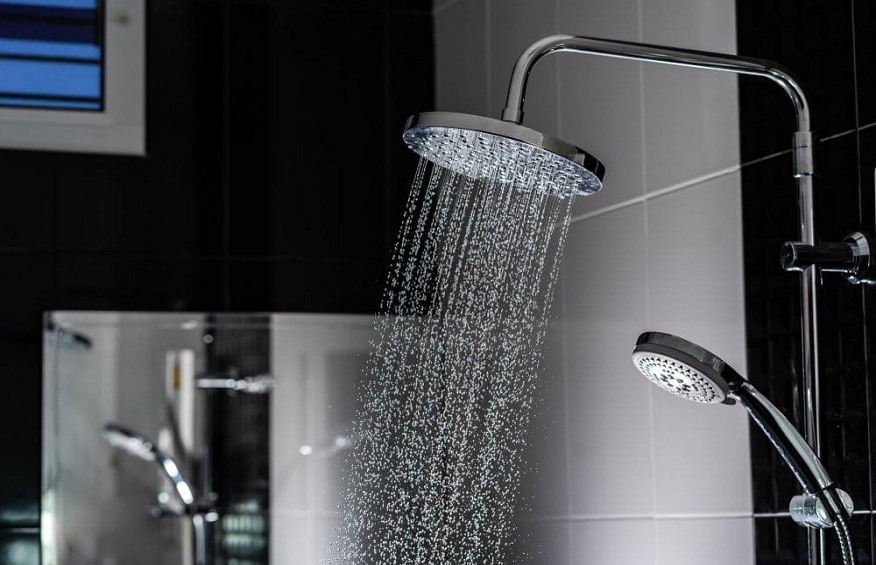The shower valve plays a significant role in your showering routine. While the showerhead is the source of water flow, the shower valve regulates the water’s temperature and pressure to make showering calming.
When selecting the ideal shower valves for your bathroom or shower makeover or replacing an existing one, you should be mindful of the following.
Thermostatic Shower Valves
If someone switches on a tap elsewhere in the house or flushes a toilet, a thermostatic shower valve keeps a steady water temperature, shielding you from sudden scorching or freezing water.
Shower valves with a thermostat frequently feature two or more handles. One handle regulates the water’s temperature, and the other controls the water’s flow and enables on/off switching. Once the temperature handle is adjusted to the desired level of warmth, you can leave it there and turn the on/off tap on and off each time you take a shower to keep the temperature there.
Triple thermostatic valves, sometimes referred to as thermostatic shower valves, may occasionally feature three handles. These are commonly included in showers that feature body jets and a regular showerhead since you need them to control two different water outputs.
For families with children, thermostatic shower valves are usually the ideal choice since they typically have an anti-scald device as an additional measure of protection.
Hot And Cold Valve
The shower valve that is designed to control water temperature is known as the hot and cold valve. It has a mixing valve, a water outlet, and a hot and cold-water inlet separately among its many parts. A mixing valve’s typical function is to combine hot and cold water to the correct temperature before sending it to the tap and showerhead.
Unlike other types of shower valves, this one has trim with two distinct handles that act similarly to a typical two-handle tap. Turn its left handle to obtain hot water, while the right one will give access to cold water. You may adjust the water temperature by opening these handles, which will mix the water from both outputs according to how much you open each handle.
Although this valve is user-friendly, it comes without the anti-scald feature, which is crucial to remember. In other words, it lacks a built-in mechanism to stop the water from being too hot in the event of an unexpected cold-water shortage.
Pressure-Balancing Valves
A pressure-balancing shower valve, also known as a mechanical valve, shower pressure valve, or anti-scald valve, keeps the water pressure in your shower constant even when the water temperature changes. This function is quite helpful in homes where many showers are utilised at various times. Similar to the hot and cold valves, it regulates the amount of hot and cold water to manage flow and temperature.
This kind of valve is valuable and practical. The pressure-balancing valve, for instance, makes sure that the shower’s water pressure doesn’t change if you chance to flush the toilet when someone is using it. Additionally, it works nicely with one or two faucets.
Multiple pistons and diaphragms are often used in pressure-balancing valves to detect variations in water pressure from both hot and cold-water lines. They then control one side to aid in preserving a constant water temperature. These shower valves might be more expensive than other alternatives.
Digital Shower Valves
Shower valve technology is advancing quickly, and we have anticipated even more significant developments in the digital bathroom sector. Digital bathroom showers now dominate the market. Switching to digital technology is wise since it gives you access to several cutting-edge capabilities. These features include Bluetooth connectivity, wireless shower controls, completely configurable water temperature settings, gorgeous LED-lit visual components, and many more.
The ability to precisely control water pressure and temperature is one of the main advantages of a digital shower valve. You may effortlessly manage it from a distance to prevent getting wet when turning the shower on or off.
Conclusion
In the end, the shower valves you choose should complement the design of your shower unit. Sleek and angular shapes are the best option if the entire décor of your bathroom tends towards a modern style.
It is advised to seek the advice of a plumber if you are unsure or hesitant about upgrading or purchasing a new shower valve. Plumbing may be complicated, and fixing errors can be expensive. Consult a professional to guarantee a proper installation up front rather than taking a chance on regrets and increased costs afterwards.

